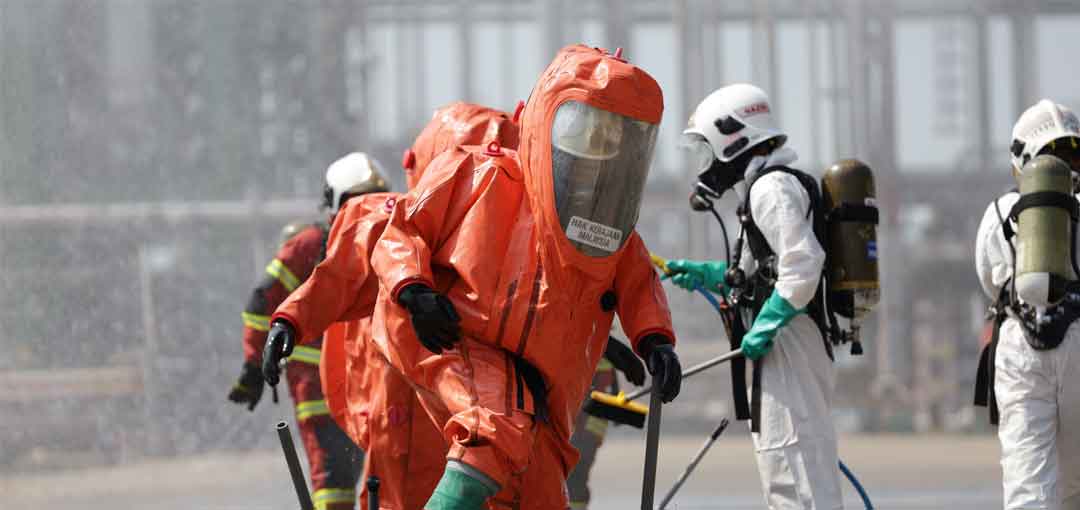What Is HAZWOPER? The Ultimate Guide
What Is HAZWOPER? The Ultimate Guide
November 8, 2023 |
In workplaces where hazardous materials are handled, safety is paramount. HAZWOPER, short for Hazardous Waste Operations and Emergency Response, is a critical set of regulations established by the Occupational Safety and Health Administration (OSHA) in the United States. HAZWOPER ensures the safety of workers involved in hazardous waste operations and emergency response activities. In this ultimate guide, we delve into the essential aspects of HAZWOPER, its training requirements, and its vital role in protecting workers and the environment.
Understanding HAZWOPER
HAZWOPER, pronounced as “haz-wopper,” stands as a significant framework aimed at safeguarding workers who may come into contact with hazardous substances during their job duties. It encompasses various industries, including but not limited to chemical manufacturing, emergency response, waste management, and construction.
At its core, HAZWOPER is about understanding the risks associated with hazardous materials and putting measures in place to mitigate those risks effectively. It’s about creating a culture of safety where every worker is aware of the potential dangers and is equipped with the knowledge and skills to respond appropriately.
HAZWOPER Training Requirements
HAZWOPER regulations stipulate specific safety training requirements for workers based on their job responsibilities and potential exposure to hazardous materials. The following are the key training levels established under HAZWOPER:
First Responder Awareness Level (FRA)
The First Responder Awareness Level is the introductory level of HAZWOPER training. It is designed for rescue personnel who are likely to witness or discover a hazardous substance release and who have minimal or no direct contact with the substance. Training at this level focuses on recognizing hazardous materials, notifying the proper authorities, and implementing protective measures.
First Responder Operations Level (FRO)
Workers at the First Responder Operations Level are those who respond to hazardous substance releases to protect nearby people, property, or the environment. They are trained to handle hazardous materials in a defensive manner. This training includes the use of personal protective equipment (PPE), containment techniques, and basic decontamination procedures.
Hazardous Materials Technician Level
Hazardous Materials Technicians are individuals who take a more proactive role in responding to hazardous materials incidents. They are trained to approach the source of a hazardous material release aggressively, stopping the release and mitigating its impact. This training level involves advanced PPE usage, hazard assessment, and incident control.
Hazardous Materials Specialist Level
Hazardous Materials Specialists are experts in dealing with hazardous materials incidents. They are responsible for identifying hazardous substances, assessing the situation, and determining the appropriate response. Specialists are trained in hazard recognition, monitoring, and advanced decontamination methods.
On-Scene Incident Commander
The On-Scene Incident Commander oversees emergency response operations at the highest level. They have comprehensive knowledge of HAZWOPER regulations and are responsible for making critical decisions to protect lives and the environment. Incident Commanders ensure that all response efforts are coordinated and executed safely.
HAZWOPER Refresher Training
HAZWOPER mandates refresher training to ensure that workers maintain their knowledge and skills. Refresher training frequencies vary depending on the specific job duties and levels of responsibility. Typically, it ranges from annual refreshers for some workers to triennial refreshers for others.
The Importance Of HAZWOPER
HAZWOPER is of paramount importance for several reasons:
Worker Safety
The primary objective of HAZWOPER is to protect the safety and health of workers who may be exposed to hazardous substances. By equipping workers with the knowledge and skills to handle these materials safely, HAZWOPER reduces the risk of accidents and injuries.
In hazardous environments where chemicals, toxins, and other hazardous materials are present, there is no room for error. HAZWOPER training ensures that every worker understands the potential dangers and knows how to protect themselves and their colleagues effectively. It empowers them to make informed decisions, use protective equipment correctly, and respond promptly in case of an emergency.
Environmental Protection
HAZWOPER also has a significant role in safeguarding the environment. Proper handling and containment of hazardous materials prevent contamination and pollution, ensuring that ecosystems remain intact and healthy.
Environmental preservation is an ethical responsibility that transcends industries. HAZWOPER not only teaches workers how to prevent environmental damage but also instills a sense of stewardship for the planet. This mindset extends beyond the workplace, fostering eco-consciousness in everyday life.
Legal Compliance
Businesses that deal with hazardous materials are legally required to adhere to HAZWOPER regulations. Failure to comply can result in hefty fines and legal consequences.
Legal compliance is not just about avoiding penalties; it’s about upholding the law and ensuring that organizations operate ethically and responsibly. HAZWOPER training helps companies meet their legal obligations and sets a standard of integrity in the workplace.
Emergency Response Capability
HAZWOPER-trained personnel are crucial in responding to chemical spills, industrial accidents, and other emergencies involving hazardous substances. Their expertise ensures that emergency responses are efficient and effective, minimizing damage and harm.
In emergency situations, every second counts. HAZWOPER-trained individuals have the skills and knowledge to act swiftly and decisively, mitigating the impact of hazardous material incidents and protecting lives and property.
Public Safety
Protecting public safety is another critical aspect of HAZWOPER. By mitigating the risks associated with hazardous materials, HAZWOPER helps prevent incidents that could impact nearby communities.
Communities trust that businesses and organizations will prioritize safety and take measures to protect the public. HAZWOPER training helps maintain this trust by ensuring that hazardous materials are handled safely and that the risks to the surrounding community are minimized.
